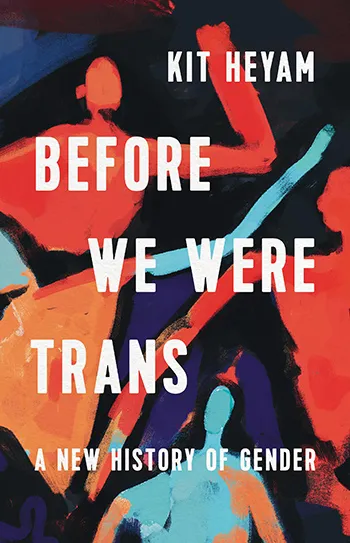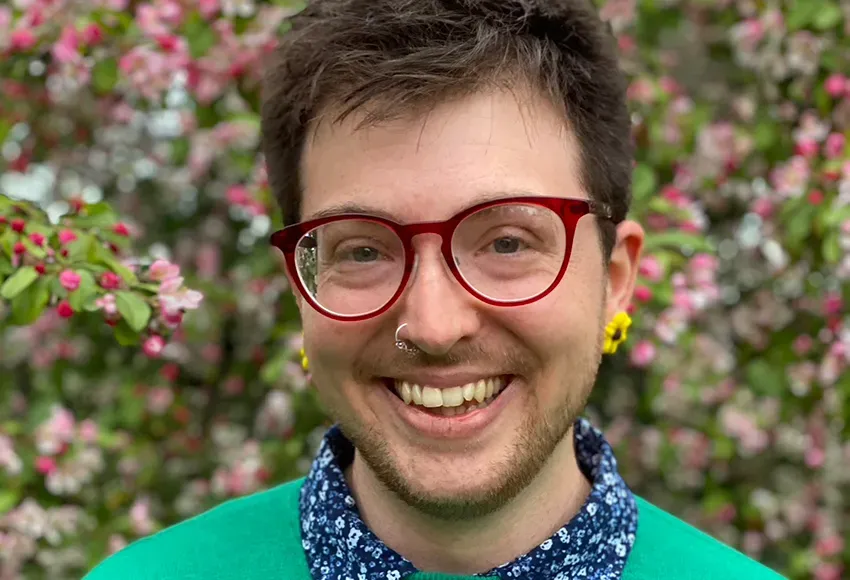When historian and scholar Kit Heyam got the chance to write a book on Trans history, they jumped at the idea. It took them just over a year to complete the nonfiction book Before We Were Trans, but they had spent years prior researching and thinking about the topic.
"It was about a year in the making but a lot longer in the thinking," Heyam said, whose publishers approached them in 2020 with an idea for a new history book. "They came to me, because they knew I worked on Trans history already, and they wanted or expected a chronological history of how gender was and how gender is," Heyam recalled.
They were excited to write a book, but they could never write an evolutionary history of gender: the concept itself has not evolved in a straight line. "I immediately said I wanted to write about all of these weird people who didn't fit into any of these boxes, and can we do it thematically instead?"
Finding connections with the past
The publishers agreed to let Heyam format the text by category. They believe how history is told is very important to contemporary readers who may share ideas or identities with the people they read about. It was a connection to Trans history that helped Heyam realize they were Trans as well.
"I came to my own Queer identity through my relationship to Queer history," they explained. "When I came out as Trans, what struck me was the narrowness of Trans history that we felt able to tell, the fact that the same few figures kept coming up again and again and again, and they were all figures who fit into this very narrow version of what it means to be Trans,"
Heyam realized that the Trans stories we tell influence not only how cis people view and accept transness but how Trans people view and accept themselves. "As someone who didn't fit into that narrow vision of what it means to be Trans – because I had not known that I was Trans since the age of three, and I didn't conform perfectly to binary stereotypes or anything like that – that felt harmful to me, because it felt like it was harming the cultural idea of what a Trans person looked like," they continued.
Heyam hopes to expand the narrative that Trans history tells so that Trans people understand there is not one specific or correct path toward being Transgender.

Trans people have always existed
Aside from broadening the widely accepted "Trans narrative," Heyam also hoped to debunk anti-Trans rhetoric. Relying on fear-mongering, conservatives today try to argue that being Transgender is something new.
"Either this a new trend and we shouldn't take it seriously, or this is a new threat, and we should put new laws in place to protect people from us. So they're always leveraging the idea of this having no history," Heyam explained.
However, in studying the past, Heyam has realized that Transgender people have, in a sense, always existed. "People have always been challenging, disrupting, and playing with gender and exposing the fact that gender does not need to be tied to a particular body," they explained.
Heyam's book aims to show that the history of gender transgression is as old as the history of gender itself, but also that gender is a fluid idea that is constantly changing.
"I think telling those stories helps us to dismantle those political arguments," they said. "It's also for Trans people who might particularly feel alone in our contemporary lives and feel like we're lacking a sense of community in the present. We might be able to find a sense of community in the past."
Before We Were Trans examines how various societies developed their concepts of gender and how some enforced those concepts onto others. "[Gender] was invented and can be uninvented," Heyam said.
Through the text, they explore how the history of gender is intertwined with ideas of racism, patriarchy, and colonialism. They believe that understanding the connections between these ways of thinking is the first step in dismantling them.
"Understanding the harmful politics in which those inventions are rooted is also important in enabling us to be critical about them," Heyam said. "Likewise, thinking about gender as something that doesn't need to bear any relationship to your body. I think that is very liberating, but not something we're taught, and certainly not something we're taught can be the norm. I think all of those are things history can teach us."
Gender and white supremacy
Heyam's book also examines how gender roles connect to white supremacy. They use the example of Two Spirit people in residential schools to focus on the connection between oppressive forces.
"I write about campaigns to eradicate the Two Spirit experience. That was in many ways very effective, because it took place through the residential school systems and indoctrinated people not only to suppress their Two Spirit selves but to reject Two Spirit people around them," they explained.
Part of exploring the global history of gender transgression is also learning how to deconstruct our Westernized understanding of queerness.
"There's a tendency to view all of these gendered experiences through a modern Western lens, to either squash them into binary categories where they don't fit or to misunderstand these experiences or not treat them on their cultural terms, and all of those are not conducive to teaching the full complexity of those experiences," they said.
Trans history before Trans language
One challenge Heyam faced when writing about Trans history was determining what classifies someone as "Trans" when they may not have had the language to do so themselves.
"I think it's not ethical or respectful to call someone a Trans person if they didn't use that word about themselves," Heyam said. "On the other hand, if we're looking for Trans history, then what we're looking for is history that shows us that gender is open to disruption, that it's never been binary, that it's never been centralized. All of the things that Trans [people] experience now, we can see those same things and those same kinds of experiences and evidence for those kinds of experiences in the past."
While gender-nonconformity is as old as gender itself, the modern language we use, like "Transgender" or "Nonbinary," is recent. None of the people in the book referred to themselves as Transgender. To label them as such would be inaccurate, as that was not their experience. Instead, Kit takes a look at the broader history of gender-nonconformity and examines how themes that are today considered to be a part of the Trans experience were also relevant then.
Despite not having the same language we use today, Heyam was surprised that many Trans people from history shared very modern ideologies about gender.
"One of my favorite people in the book is Thomas or Thomasine Hall. What surprised me about their story was to find someone declaring in a legal context, in a court of law, in 1629, 'I am both man and woman.' That is just incredible to me. Such a relatable sentiment so many Trans people today articulated by someone hundreds and hundreds of years ago," they said with a smile.
The double standard set by colonization
Another surprise Heyam found in history was that many Trans people lived happy lives. "I expected to find stories of oppression, from which I'd have to tease out the evidence of agency. I expected many to be all awful, essentially. I was surprised that people's experiences have been much more varied and creative than that," they said.
Heyam discovered that while colonization was the root of oppression and the eradication of many Trans-accepting cultures, it also provided a space for those with white and class privileges to explore gender more than racially marginalized Trans people.
"There were plenty of places where people used colonialism as an opportunity for gender nonconformity," Heyam said. "It suppressed some and enabled others, and that inescapable reciprocal relationship between colonialism and gender, racism and gender, was important for me to work out and tackle."
Through piecing together Trans history, Heyam has learned many lessons that still ring true today. They believe history is an emotional process, and if learning about it makes you feel something, positive or negative, you're doing it right.
"Whenever we do history, that's an emotional process, and that's not something we need to apologize for. Instead, it is productive and beautiful," they said.
Heyam hopes readers can learn from their book that gender is always changing. They believe antiracism is essential to Trans activism, because the histories of white people are often more readily available, and narratives around LGBTQ+ history often prioritize them. We need to learn about Trans history globally, and that can only happen when we first deconstruct the colonial ideologies we hold onto.
"I've learned that the suppression of gender-nonconformity is always really about social control," Heyam said. "You see that clearly in panics about gender-nonconforming dress in the 16th and 17th centuries, where people are saying women and AFAB people are wearing men's clothes, and that means society is out of joint, the world is upside down because these people are transgressing from their proper place.
"I think what we need to be aware of now in the anti-Trans backlash is that it is not really about gender. It is about control."
They believe now, more than ever, it is essential for the LGBTQ+ community to stand united.
"You can't separate those identities for the vast majority of the past, and the attempts to divide us now are incredibly ahistorical. I hope the future looks like us realizing that and fighting based on our shared oppression," they said.
Queer history, just like Queer future, belongs to us all.


